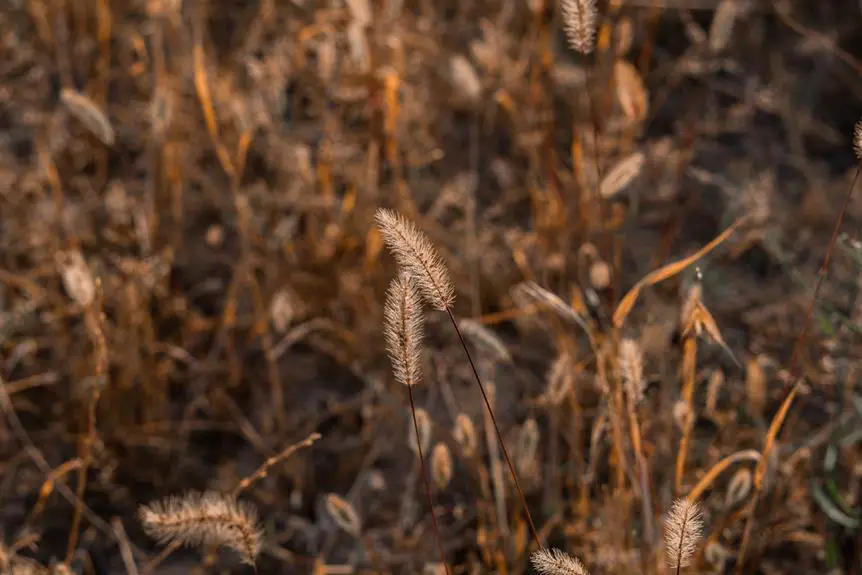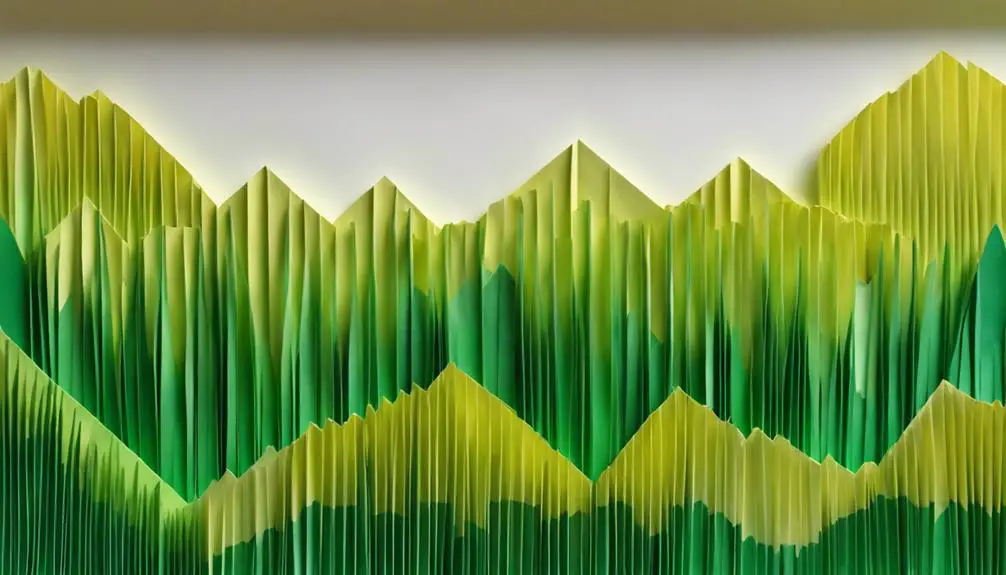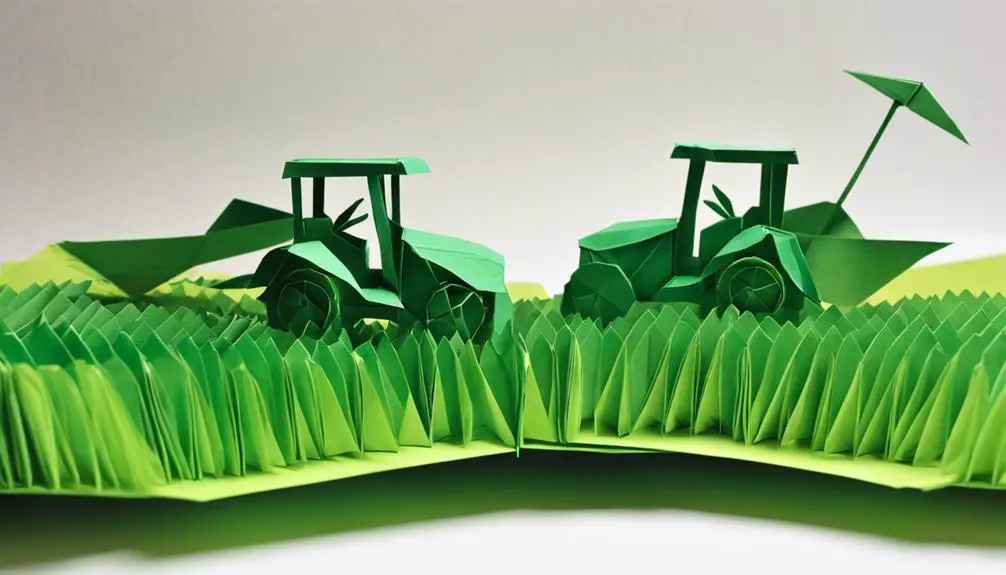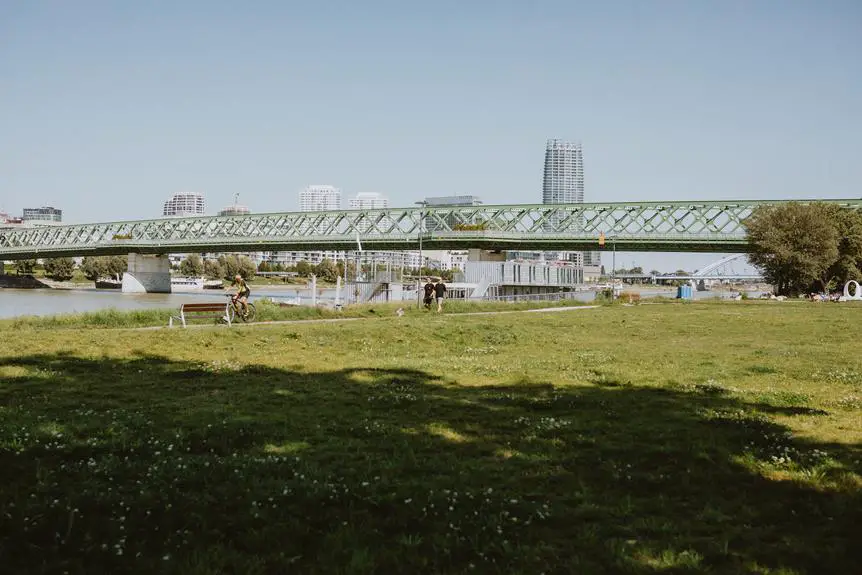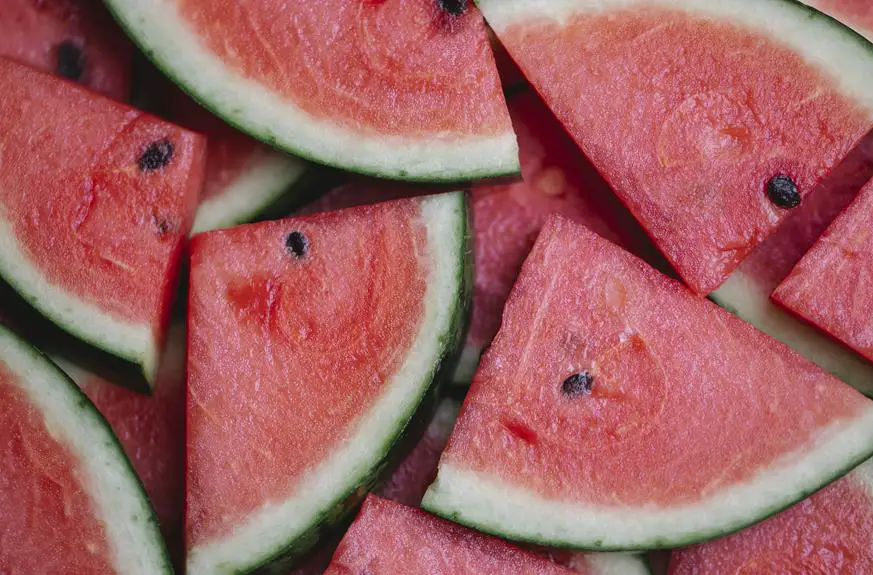Fescue grass, with its impressive drought tolerance of up to 14 days without water, is a popular choice for homeowners seeking a low maintenance lawn.
It forms a dense thatch that helps prevent weeds and withstands heavy foot traffic, making it ideal for active families.
In addition, fescue grass thrives in shady areas, providing a lush green carpet where other grasses struggle.
However, it's worth noting that fescue grass can be susceptible to certain diseases.
Key Takeaways
- Fescue grass requires less water and can tolerate drought conditions better than other grass types.
- It has low maintenance requirements, saving time and resources for homeowners.
- Proper lawn care practices can prevent thatch buildup and promote soil health.
- Fescue grass can withstand heavy foot traffic and is suitable for high-traffic areas.
Drought Tolerance
Fescue grass's drought tolerance makes it a popular choice for homeowners looking for a low-maintenance lawn. With its ability to withstand prolonged periods of dry weather, fescue grass requires less water compared to other types of turf. This makes it an ideal option for regions with limited water availability or for individuals who prefer to conserve water.
One of the main reasons for fescue grass's drought tolerance is its deep root system. The roots of fescue grass can extend several inches into the soil, allowing them to access water from deeper layers. This enables the grass to survive and remain green even during times of drought.
Furthermore, fescue grass has a natural ability to enter a dormant state when water is scarce. During dry periods, the grass will turn brown and appear dead. However, once water becomes available again, fescue grass can quickly recover and regain its lush green appearance.
In addition to its drought tolerance, fescue grass also offers other benefits. It has a dense growth habit, which helps to prevent weed growth and reduce the need for herbicides. Fescue grass is also shade tolerant, making it suitable for yards with trees or other structures that cast shadows.
Low Maintenance Requirements
Fescue grass is known for its low maintenance requirements, making it a popular choice for homeowners and landscapers alike. This type of grass is drought-resistant and hardy, able to withstand dry conditions without the need for excessive watering.
With fescue grass, homeowners can enjoy a beautiful lawn that requires less water and maintenance, saving both time and resources.
Drought-Resistant and Hardy
Drought resistance and low maintenance make fescue grass a reliable choice for homeowners.
Fescue grass is well-known for its ability to withstand periods of drought. It has deep root systems that allow it to access water from deeper soil layers, making it more resilient during dry spells. This makes fescue grass a great option for homeowners who live in areas with limited water resources or those who prefer to conserve water.
Additionally, fescue grass is hardy and can thrive in a variety of soil types and climate conditions. It requires minimal care and can withstand heavy foot traffic, making it an ideal choice for high-traffic areas in the yard.
Homeowners can enjoy a lush and green lawn without the need for constant maintenance and watering.
Requires Less Water
Is fescue grass a low maintenance option that requires less water?
Fescue grass is indeed a low maintenance choice that can help conserve water. Compared to other types of grass, fescue requires less frequent watering due to its deep root system, which allows it to access moisture deeper in the soil. This deep root system also helps the grass tolerate drought conditions better.
Fescue grass is known for its ability to survive with minimal irrigation, making it an excellent option for areas with limited water resources or for homeowners looking to reduce their water usage. By choosing fescue grass, individuals can enjoy a lush green lawn without the need for excessive watering, making it a practical and environmentally friendly choice.
Thatch Formation
Thatch formation is an important consideration when it comes to maintaining a healthy fescue grass lawn.
One point to discuss is the prevention of thatch buildup, which can be achieved through proper lawn care practices such as regular mowing and dethatching.
Another point to address is the impact of thatch on lawn health, as excessive thatch can hinder water and nutrient absorption, leading to a decline in the overall health and appearance of the grass.
Thatch Buildup Prevention
Regular maintenance of fescue grass promotes healthy growth and minimizes the buildup of thatch. Thatch, a layer of dead grass stems and roots that accumulates between the grass blades and the soil, can hinder the grass's ability to receive nutrients, water, and air.
To prevent thatch buildup, it's important to implement proper lawn care practices. Regular mowing at the correct height, typically between two and three inches, helps to discourage the development of excessive thatch. Additionally, frequent and shallow watering instead of infrequent deep watering can aid in preventing thatch formation.
It's also beneficial to aerate the lawn periodically to alleviate compacted soil, allowing for better water and nutrient absorption. By following these maintenance practices, fescue grass can thrive and maintain a healthy, thatch-free lawn.
Impact on Lawn Health
To maintain a healthy lawn, proper maintenance practices of fescue grass are crucial in preventing the formation of thatch and promoting optimal lawn health. Thatch, a layer of dead grass stems, roots, and debris that accumulates at the base of the grass, can hinder the health of the lawn if not managed properly.
Here are three ways in which fescue grass can impact lawn health and the formation of thatch:
- Deep and infrequent watering: Fescue grass prefers deep watering rather than frequent shallow watering. This encourages the roots to grow deeper, reducing the likelihood of thatch formation.
- Regular mowing: Keeping the grass at the recommended height of around 2-3 inches helps prevent excessive thatch buildup. Mowing too low can stress the grass and promote thatch formation.
- Proper fertilization: Applying the right amount of fertilizer at the right time helps maintain the health of the grass, preventing excessive thatch accumulation. Avoid over-fertilization, as it can increase thatch buildup.
Tolerance for Heavy Foot Traffic
Fescue grass exhibits a high tolerance for heavy foot traffic, making it an ideal choice for areas that experience frequent use. Whether it's a backyard where kids and pets play, a sports field, or a public park, fescue grass can withstand the constant pressure and still maintain its lush appearance.
One of the reasons fescue grass can handle heavy foot traffic is its deep root system. These roots provide stability and support to the grass, allowing it to bounce back after being trampled on. Additionally, fescue grass is known for its ability to repair itself quickly. It has a rapid growth rate, which means that even if some areas get damaged, new shoots will emerge and fill in the gaps.
Another advantage of fescue grass is its durability. It's a tough grass variety that can handle wear and tear without showing signs of stress. This makes it perfect for high-traffic areas where other grass types may struggle to survive.
However, it's important to note that while fescue grass can tolerate heavy foot traffic, it still requires proper maintenance to stay healthy. Regular mowing, watering, and fertilizing are essential to ensure its longevity and resilience.
Shade Tolerance
One advantage of fescue grass is its ability to tolerate shade, allowing it to thrive even in areas with limited sunlight. This makes it an ideal choice for homeowners who have trees or buildings that cast shadows on their lawns.
Here are three reasons why fescue grass excels in shady areas:
- Adaptability: Fescue grass has a remarkable ability to adapt to different light conditions. It can withstand low light levels and still maintain its vibrant green color. This makes it perfect for areas that receive only a few hours of direct sunlight each day.
- Dense growth: Fescue grass has a dense growth habit, which helps it capture as much sunlight as possible. Its blades are narrow, enabling them to reach towards the available light source. This allows the grass to maximize photosynthesis, even in shaded areas.
- Cool-season preference: Fescue grass is a cool-season grass, meaning it thrives in cooler temperatures. It has evolved to tolerate shade because it naturally grows in regions with more shade, such as under trees or in northern climates. Its shade tolerance is inherent, making it a reliable choice for shady areas.
With its shade tolerance, adaptability, dense growth, and cool-season preference, fescue grass is a top choice for those looking to maintain a lush lawn even in shaded environments.
Disease Resistance
Although fescue grass is known for its shade tolerance, it also boasts strong disease resistance. This makes it a popular choice among homeowners and landscapers who want a low-maintenance grass that can withstand various disease threats. Fescue grass is particularly resistant to common diseases such as brown patch, dollar spot, and leaf spot.
To help visualize the benefits of fescue grass's disease resistance, here is a table that compares its resistance to other popular grass types:
| Disease Resistance | Fescue Grass | Bermuda Grass | Kentucky Bluegrass |
|---|---|---|---|
| Brown Patch | High | Low | Medium |
| Dollar Spot | High | Medium | Low |
| Leaf Spot | High | Low | Medium |
As shown in the table, fescue grass consistently ranks high in disease resistance compared to Bermuda grass and Kentucky bluegrass. This means that fescue grass is less likely to be affected by these common diseases, resulting in a healthier and more vibrant lawn.
Aesthetics and Appearance
The lush and vibrant appearance of fescue grass enhances the overall aesthetics of any landscape. Its unique characteristics make it a popular choice among homeowners and landscape designers. Here are three reasons why fescue grass adds beauty to any outdoor space:
- Deep Green Color: Fescue grass boasts a deep green hue that's visually appealing and adds a touch of elegance to any landscape. Whether it's used in a front yard or a backyard, this grass variety creates a lush and inviting atmosphere.
- Fine Texture: Fescue grass has a fine texture that gives it a soft and velvety look. Its delicate blades create a visually pleasing contrast when combined with other plants and flowers. This adds depth and interest to the overall design of a landscape.
- Year-round Beauty: Unlike other grass species that go dormant during certain seasons, fescue grass maintains its vibrant appearance all year long. Its ability to withstand both hot and cold temperatures ensures that your landscape will look stunning no matter the time of year.
Frequently Asked Questions
Can Fescue Grass Be Used in Areas With High Foot Traffic, Such as a Backyard Play Area?
Fescue grass can be used in areas with high foot traffic, such as a backyard play area. It provides a durable and resilient surface, capable of withstanding frequent use without excessive damage or wear.
How Does Fescue Grass Compare to Other Grass Types in Terms of Disease Resistance?
Fescue grass's disease resistance is comparable to other grass types. It thrives in various climates and requires minimal maintenance. Its durability and adaptability make it a popular choice for homeowners looking for low-maintenance, disease-resistant grass.
Does Fescue Grass Require Any Special Maintenance During Extreme Drought Conditions?
Fescue grass requires special maintenance during extreme drought conditions. This includes regular watering, deep and infrequent irrigation, and proper soil management. However, it can still maintain its color and density even in dry periods.
Can Fescue Grass Grow Well in Areas With Limited Sunlight or Heavy Shade?
Fescue grass can grow well in areas with limited sunlight or heavy shade. It is tolerant of shade and can provide a lush green lawn even in areas where other grass varieties struggle to thrive.
What Are Some Common Aesthetic Issues or Challenges That Homeowners May Face With Fescue Grass?
Aesthetically, homeowners may face challenges with fescue grass. It can become patchy, brown, or develop weeds. However, with proper maintenance and care, fescue grass can create a lush and vibrant landscape.

